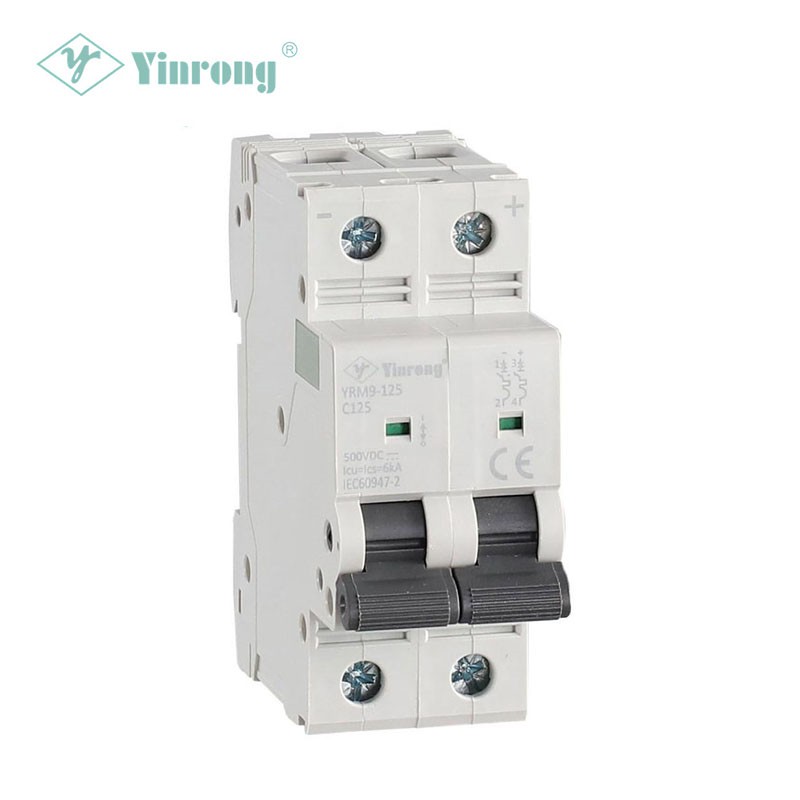
- English
- Español
- Português
- русский
- Français
- 日本語
- Deutsch
- tiếng Việt
- Italiano
- Nederlands
- ภาษาไทย
- Polski
- 한국어
- Svenska
- magyar
- Malay
- বাংলা ভাষার
- Dansk
- Suomi
- हिन्दी
- Pilipino
- Türkçe
- Gaeilge
- العربية
- Indonesia
- Norsk
- تمل
- český
- ελληνικά
- український
- Javanese
- فارسی
- தமிழ்
- తెలుగు
- नेपाली
- Burmese
- български
- ລາວ
- Latine
- Қазақша
- Euskal
- Azərbaycan
- Slovenský jazyk
- Македонски
- Lietuvos
- Eesti Keel
- Română
- Slovenski
- मराठी
- Srpski језик
How to Choose the Right DC Miniature Circuit Breaker for Solar Systems
Solar power systems are becoming increasingly popular, but ensuring their safety and efficiency requires the right protection devices. One critical component is the DC Miniature Circuit Breaker (MCB), which safeguards your system from overcurrents and short circuits. But with so many options available, how do you pick the best one for your solar setup?
As someone who has worked in electrical protection for years, I’ve seen firsthand how the wrong choice can lead to system failures or even safety hazards. In this guide, I’ll walk you through the key factors to consider when selecting a DC Miniature Circuit Breaker for solar applications—backed by real-world experience and technical insights.

What Are the Key Parameters to Look for in a DC Miniature Circuit Breaker?
Not all breakers are created equal, especially when dealing with DC solar systems. Here are the most important specifications to check before making a decision:
1. Voltage Rating (VDC)
Solar systems typically operate at higher DC voltages (up to 1000V or more). Ensure your DC Miniature Circuit Breaker matches your system’s voltage to prevent arcing or failure.
2. Current Rating (Amperes)
The breaker must handle the maximum current your solar array produces. Undersizing can cause nuisance tripping, while oversizing may fail to protect your system.
3. Breaking Capacity (kA)
This indicates how much fault current the breaker can interrupt. For solar applications, a breaking capacity of 4.5kA to 10kA is usually sufficient.
4. Pole Configuration (1P, 2P, 3P, etc.)
-
1P (Single Pole) – For simple DC circuits
-
2P (Double Pole) – For higher voltage or polarity-sensitive systems
-
3P/4P – For large-scale solar farms
5. Temperature & Environmental Resistance
Since solar systems are often exposed to extreme weather, look for breakers with UV-resistant housing and a wide operating temperature range (-25°C to +60°C).
Why Does a Solar DC Miniature Circuit Breaker Need Special Features?
Unlike AC breakers, DC Miniature Circuit Breakers must handle constant DC current, which poses unique challenges:
-
DC Arc Suppression – DC arcs are harder to extinguish, so specialized breakers use magnetic blowout techniques.
-
Reverse Polarity Protection – Some breakers prevent damage from incorrect wiring.
-
Low Power Loss – High-efficiency breakers minimize energy waste in solar systems.
At Galaxy Fuse, our DC MCBs are specifically engineered for solar applications, ensuring reliable performance even in harsh conditions.
How Do Galaxy Fuse DC Miniature Circuit Breakers Compare?
To help you make an informed choice, here’s a quick comparison of our top DC Miniature Circuit Breaker models for solar systems:
| Model | Voltage (VDC) | Current Range (A) | Breaking Capacity (kA) | Poles | Special Features |
|---|---|---|---|---|---|
| GF-DC32 | 250V | 6A - 32A | 6kA | 1P/2P | High arc resistance |
| GF-DC63 | 500V | 10A - 63A | 10kA | 2P | Reverse polarity protection |
| GF-DC125 | 1000V | 32A - 125A | 15kA | 2P/3P | Industrial-grade durability |
These Galaxy Fuse breakers are trusted by solar installers worldwide for their durability, precision tripping, and long service life.
What Are Common Mistakes When Choosing a DC Miniature Circuit Breaker?
From my experience, these are the top mistakes to avoid:
✅ Mismatching Voltage Ratings – Always verify your system’s max voltage.
✅ Ignoring Ambient Temperature – Cheap breakers may fail in extreme heat or cold.
✅ Using AC Breakers for DC – They won’t extinguish DC arcs properly.
✅ Overlooking Certification – Look for IEC 60898, UL 489, or TUV marks.
Need a Reliable DC Miniature Circuit Breaker for Your Solar Project?
Choosing the right DC Miniature Circuit Breaker is crucial for system safety and efficiency. At Galaxy Fuse, we’ve spent years refining our breakers to meet the toughest solar demands. Whether you’re installing a small rooftop array or a large solar farm, we have the right protection solution for you.
Got questions? Our experts are here to help—Contact Us Today for personalized recommendations!



